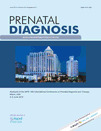
PRENATAL DIAGNOSIS
Scope & Guideline
Pioneering Research in Prenatal Genetics and Obstetrics
Introduction
Aims and Scopes
- Fetal Imaging Techniques:
The journal emphasizes the use of advanced imaging modalities, such as ultrasound and MRI, to evaluate fetal anomalies and guide clinical decision-making. - Genetic Screening and Testing:
A strong focus is placed on the development and implementation of genetic screening techniques, including non-invasive prenatal testing (NIPT) and exome sequencing, to identify genetic disorders prenatally. - Fetal Therapy and Management:
Research on therapeutic interventions for various fetal conditions is a core area, encompassing surgical techniques and innovative treatment options to improve fetal health outcomes. - Multidisciplinary Collaboration:
The journal promotes collaboration among healthcare professionals, including obstetricians, geneticists, and pediatric specialists, to enhance prenatal care and treatment strategies. - Ethical Considerations in Prenatal Care:
The journal addresses ethical issues surrounding prenatal diagnosis and treatment, ensuring that the implications of genetic findings and interventions are carefully considered. - Patient-Centric Approaches:
There is a consistent focus on understanding patient experiences and preferences in the context of prenatal diagnosis and management, highlighting the importance of informed decision-making.
Trending and Emerging
- Integration of Artificial Intelligence:
There is a rising trend toward incorporating artificial intelligence in prenatal imaging and diagnostics, enhancing the accuracy of anomaly detection and risk stratification. - Expanded Carrier Screening:
Research focusing on expanded carrier screening for a wider array of genetic conditions is gaining traction, reflecting a shift towards more comprehensive prenatal genetic assessments. - Telemedicine and Remote Consultations:
Emerging themes include the use of telemedicine for prenatal consultations, particularly highlighted during the COVID-19 pandemic, allowing for greater access to care. - Patient Experiences and Preferences:
Increasing attention is being paid to understanding patient perspectives and experiences regarding prenatal diagnosis, highlighting the importance of patient-centered care. - Ethical Frameworks for Prenatal Testing:
The development of ethical frameworks surrounding prenatal genetic testing and interventions is emerging as a critical area of focus, particularly in light of the rapid advancements in genetic technologies.
Declining or Waning
- Traditional Cytogenetic Techniques:
There has been a noticeable decrease in publications focused on traditional cytogenetic methods, such as karyotyping, as newer and more efficient genetic testing methods become prevalent. - Standalone Ultrasound Screening:
As non-invasive genetic testing and advanced imaging techniques gain prominence, the reliance on standalone ultrasound as a primary screening tool has diminished. - General Reviews on Prenatal Conditions:
The publication of broad, general reviews on prenatal conditions has declined, with more emphasis now placed on specific case studies or targeted research findings. - Standardized Protocols for Genetic Testing:
There appears to be a waning interest in the publication of standardized protocols for genetic testing, as personalized approaches and individualized care plans are increasingly prioritized.
Similar Journals
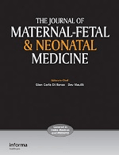
Journal of Maternal-Fetal & Neonatal Medicine
Transforming patient care with evidence-based research.The Journal of Maternal-Fetal & Neonatal Medicine, published by Taylor & Francis Ltd, is a leading multidisciplinary journal focused on the critical fields of obstetrics, gynecology, pediatrics, and perinatology. Since its inception, this journal has offered a platform for the dissemination of pioneering research and innovative clinical practices, bridging knowledge gaps and informing the future of maternal and neonatal health. With a commendable 2023 impact factor that places it in the Q2 category of both Obstetrics and Gynecology and Pediatrics, Perinatology and Child Health, it stands at the forefront of scientific discourse, attracting a global readership. The journal aims to provide high-quality articles that contribute significantly to patient care, clinical practices, and policy-making, ensuring relevance and applicability to both researchers and healthcare professionals. With comprehensive access options and an emphasis on the convergence of emerging research trends, the Journal of Maternal-Fetal & Neonatal Medicine remains an invaluable resource for anyone dedicated to advancing the health of mothers and their newborns.
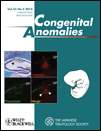
CONGENITAL ANOMALIES
Advancing knowledge on congenital disorders.CONGENITAL ANOMALIES is a notable journal published by WILEY, dedicated to advancing the understanding of congenital disorders and anomalies through high-quality research and clinical insights. With an ISSN of 0914-3505 and an E-ISSN of 1741-4520, this journal has been a key resource for professionals in the fields of pediatrics, embryology, and developmental biology since its inception in 1973, although coverage discontinued in Scopus after 2019 due to evolving standards in publication. The journal is ranked in the 48th percentile in the domain of pediatrics, as well as in the 26th and 14th percentiles respectively for embryology and developmental biology, placing it among respected publications in its category. Although it does not currently offer open access options, its contributions remain vital for researchers, healthcare professionals, and students seeking up-to-date information on congenital anomalies, their origins, and potential interventions. With a commitment to fostering knowledge in this critical area of health science, CONGENITAL ANOMALIES continues to play an important role in the intersection of scientific research and clinical practice.
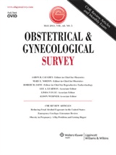
OBSTETRICAL & GYNECOLOGICAL SURVEY
Empowering Clinical Excellence in Obstetrics and GynecologyObstetrical & Gynecological Survey, a leading journal in the fields of obstetrics and gynecology, is published by Lippincott Williams & Wilkins. With a history dating back to 1946, this esteemed journal provides a comprehensive platform for raising awareness and fostering advances in the health and clinical practices surrounding women's reproductive health. Its current rankings highlight its significance, placing it in the Q2 category for Obstetrics and Gynecology and Q3 for Medicine (miscellaneous) in 2023, with a Scopus rank of 105 out of 209. The journal aims to deliver high-quality, peer-reviewed articles on a diverse range of topics, including clinical studies, reviews, and innovative research, making it an essential resource for researchers, practitioners, and students in the field. Though it does not currently offer open access, the journal's impactful contributions continue to shape the dialogue and advancements within the specialty.
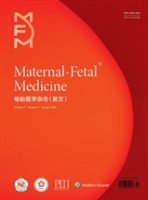
Maternal-Fetal Medicine
Empowering clinicians with groundbreaking insights in reproductive health.Maternal-Fetal Medicine is a pivotal open-access journal dedicated to advancing the field of reproductive health, encompassing both obstetrics and pediatrics. Published by Lippincott Williams & Wilkins, this journal has been providing a platform for groundbreaking research and comprehensive reviews since its transition to open access in 2019. With an ISSN of 2096-6954 and E-ISSN 2641-5895, it aims to disseminate high-quality findings that inform clinical practice and improve maternal and child health outcomes. The journal operates within the United States and is strategically positioned in Q3 of both the Obstetrics and Gynecology and Pediatrics, Perinatology and Child Health categories according to the 2023 evaluation metrics. Despite its relatively recent establishment, Maternal-Fetal Medicine is committed to addressing essential issues and innovations in maternal-fetal health, fostering a collaborative environment for researchers, clinicians, and educators. It serves as a vital resource for those committed to pushing the boundaries of knowledge in this critical area of healthcare.

Journal of Fetal Medicine
Innovative insights for the future of fetal medicine.Welcome to the Journal of Fetal Medicine, a leading publication dedicated to the progress of research in the field of fetal health and medicine. Published by Thieme Medical and Scientific Publishers Pvt Ltd, this journal serves as a vital resource for professionals, researchers, and students alike, offering insights into the latest advancements, methodologies, and best practices in fetal medicine. With ISSN 2348-1153 and E-ISSN 2348-8859, the journal aims to provide an international platform for sharing valuable findings and clinical practices to improve outcomes for both mothers and their unborn children. While the journal is not open access, it ensures the dissemination of high-quality peer-reviewed content, promoting knowledge exchange across various subspecialties within fetal medicine. The Journal of Fetal Medicine is poised to impact the field significantly, fostering innovation and collaboration among its readership.
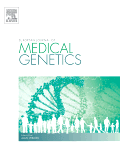
European Journal of Medical Genetics
Advancing Genetic Insights for Enhanced HealthcareEuropean Journal of Medical Genetics, published by Elsevier, is a pivotal platform dedicated to advancing knowledge in the fields of medical genetics and its clinical applications. With an ISSN of 1769-7212 and an E-ISSN of 1878-0849, this journal fosters innovative research and insights into the genetic factors that influence human health. Ranked in the Q3 category for both Genetics and Clinical Genetics, and achieving notable recognition in Medicine (miscellaneous) with a Q2 positioning, it strives to bridge the gap between laboratory findings and clinical practice. Operating in an Open Access format, the journal aims at maximally disseminating essential findings to researchers, professionals, and students alike, ensuring that critical advances in genetics are accessible to the global medical community. With converged publication years spanning from 2005 to 2024, the journal strengthens its mission to be at the forefront of genetic research that informs clinical methodologies and fosters improved healthcare outcomes.

Molecular Cytogenetics
Unveiling the Mysteries of Genes and Chromosomes.Molecular Cytogenetics is a prestigious open-access journal published by BMC, dedicated to advancing the fields of biochemistry, genetics, and molecular biology. Since its inception in 2008, this journal has facilitated prominent research and developments in the cytogenetics domain, featuring innovative studies and reviews that explore the intricate relationship between cellular structures, genetic makeup, and various biological processes. With a robust impact factor and a commendable positioning within Q3 and Q4 categories across multiple relevant disciplines, it provides a vital platform for researchers to disseminate their findings to a global audience. The journal's open-access model ensures that cutting-edge research is readily available to students, professionals, and scholars, promoting free knowledge exchange. Situated in the vibrant landscape of the United Kingdom, Molecular Cytogenetics continues to contribute significantly to scientific progress, solidifying its role as an essential resource for those engaged in the exploration of genetic and cytogenetic inquiry.

Ginekologia Polska
Empowering Obstetrics and Gynecology with Open Access InsightsGinekologia Polska is a distinguished journal in the field of Obstetrics and Gynecology, published by VIA MEDICA. Established in 1948, and with an Open Access model adopted since 2007, this journal aims to disseminate high-quality research and advancements in women's health. With an ISSN of 0017-0011 and an E-ISSN of 2543-6767, it has been indexed in major databases, reflecting its relevance in the medical community, currently holding a Q3 category in the latest 2023 rankings. Hailing from Poland, the journal serves as a vital platform for researchers, practitioners, and students to engage with contemporary issues and innovations in gynecological and obstetric care, making significant contributions to both local and global health discussions. It is essential reading for those committed to advancing their understanding and practice in this critical field.

ALCOHOL-CLINICAL AND EXPERIMENTAL RESEARCH
Fostering understanding and innovation in alcohol research.ALCOHOL-CLINICAL AND EXPERIMENTAL RESEARCH, published by WILEY, is a leading peer-reviewed journal dedicated to advancing the understanding of alcohol use and its clinical implications. With an impressive impact factor and categorized in the top quartile (Q1) in Medicine (miscellaneous), Psychiatry and Mental Health, and Toxicology, this journal serves a crucial role in disseminating high-quality research that informs clinical practice and health policy. The journal’s scope encompasses a wide range of topics related to alcohol use, including its effects on mental health, addiction, and public health, providing a vital platform for professionals, researchers, and students committed to enhancing knowledge in the field. The journal operates in the United States and is known for its rigorous editorial standards, ensuring that published articles contribute valuable insights to ongoing discussions in medicine and behavioral health. As of 2023-2024, the journal continues to thrive in a competitive academic landscape, aiming to foster collaboration and innovation in alcohol-related research.

Obstetric Medicine
Transforming obstetric care with groundbreaking findings.Obstetric Medicine is a prominent journal published by SAGE Publications Ltd that focuses on advancing the field of obstetrics and gynecology through innovative research and clinical insights. With an ISSN of 1753-495X and an E-ISSN of 1753-4968, the journal has established itself as an essential resource for practitioners, researchers, and students alike, particularly noted for its contributions to maternal health and pregnancy-related conditions. Operating from the United Kingdom, the journal is indexed in Scopus and is currently ranked within the 42nd percentile in its category, reflecting its commitment to high-quality scholarship. Although it is categorized in the Q3 quartile for 2023, Obstetric Medicine continues to evolve as its scope widens, appealing to a diverse audience interested in both clinical and research aspects of obstetric care. The journal fosters a rich platform for exchanging ideas and findings, enabling readers to stay abreast of the latest advancements and practices in the field. Engaging with this journal provides valuable insights that can enhance the knowledge base and clinical skills of those dedicated to women’s health.